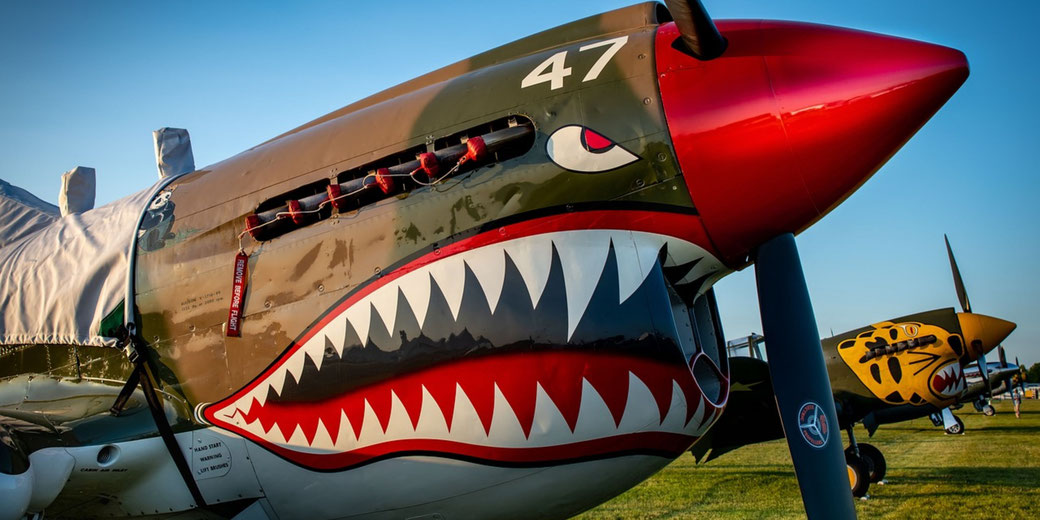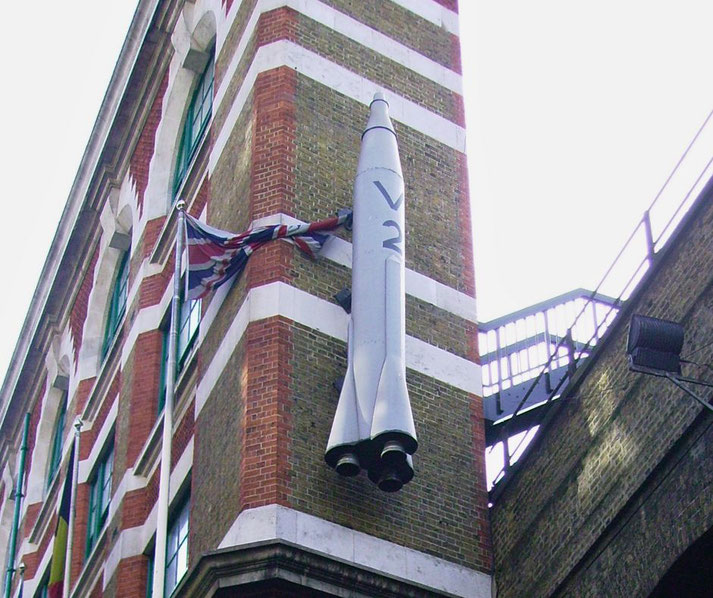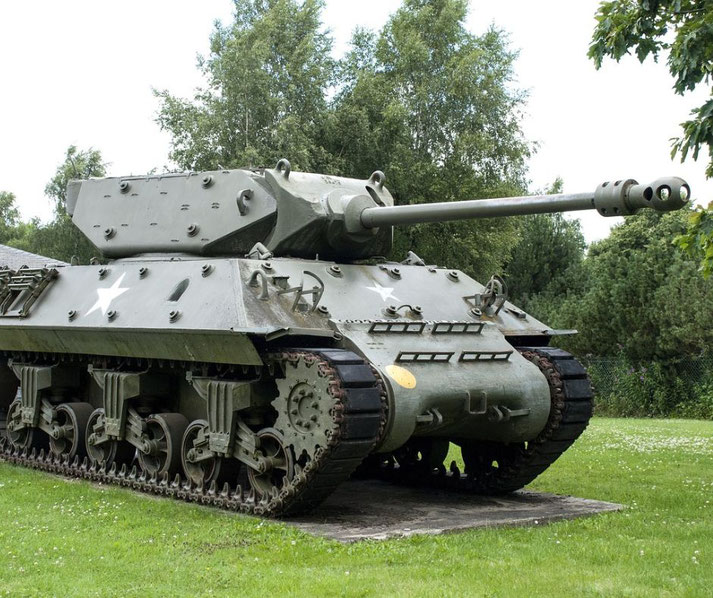7 groundbreaking technologies that won WWII

The range of technologies that were created and adapted during the course of World War II reshaped the 20th century in ways few could have anticipated at the time: both the battlefield and society.
As is often the case, the pressure to succeed in war we the catalyst for many nations to harness science to an extent never before seen.
Ultimately, what they discovered, would lay the groundwork for many aspects of the modern world that we take for granted.
1. Radar: Eyes in the skies
Radar technology, which was first developed in the years leading up to World War II, became a decisive force in the conflict.
The ability to detect enemy aircraft and ships at a distance provided a significant strategic advantage.
In 1935, British scientist Robert Watson-Watt demonstrated the feasibility of radar, and, by 1940, the British had established a chain of radar stations along their coastline, known as Chain Home.
These early warning systems allowed the Royal Air Force to efficiently deploy fighter planes against incoming German bombers, which significantly reduced the effectiveness of Luftwaffe air raids.
Meanwhile, radar also transformed naval warfare, since it gave Allied forces a vital edge in detecting enemy submarines and ships.
For instance, during the Battle of the Atlantic, radar-equipped aircraft and convoys could avoid ambushes, and destroyers could accurately target submerged submarines.
The United States Navy also used radar during pivotal engagements such as the Battle of Midway in June 1942 to detect and intercept Japanese planes before they could strike.
Due to its ability to precisely detect enemy movements, radar diminished the element of surprise.
In the Pacific Theatre in particular, radar allowed for more effective night operations, as seen in the Guadalcanal Campaign, where radar-guided intercepts gave the U.S. forces a significant advantage.
As the war progressed, both the Axis and Allied powers recognized the critical importance of radar, leading to an arms race in electronic warfare.
This resulted in the development of radar countermeasures, such as jamming and the use of chaff.
2. The jet engine
When the war began in WWII, all aircraft were powered by propelling engines.
However, during the war, the first jet engine was tested and fitted to planes. In fact, the German Messerschmitt Me 262 was the world’s first operational jet-powered fighter, and first took to the skies in 1942.
It was powered by twin Junkers Jumo 004 engines and could reach speeds of up to 540 miles per hour.
This meant that it could outpace any Allied aircraft at the time. This speed advantage allowed the Me 262 to dominate in air-to-air combat when it finally entered service in 1944.
However, delays in production and fuel shortages limited its real-world impact on the war’s outcome.
The Allies, too, were quick to recognize the potential of jet technology, with the British Gloster Meteor becoming operational in July 1944.
Though slower than its German counterpart, the Meteor proved effective against the V-1 flying bombs, shooting down 14 in its first weeks of service.
Regardless, the introduction of jet-powered aircraft would go on to revolutionize air combat.
New aircraft could now operate at altitudes and velocities that piston-engine planes could not achieve, which meant that many traditional tactics were quickly obsolete.
For example, the Me 262’s speed forced Allied pilots to rely more on teamwork and less on dogfighting, which had dominated previous aerial engagements.
Jet aircraft also changed the nature of bombing raids, since they could reach targets faster and with greater precision.
As the war drew to a close, the jet engine’s influence on military aviation became undeniable.
Although the technology was in its infancy during WWII, the rapid advancements made during these years set the stage for post-war developments.
The United States captured German scientists and blueprints under Operation Paperclip, which accelerated its own jet programs.
By 1947, the Bell X-1, piloted by Chuck Yeager, would even break the sound barrier, a feat unimaginable before the war.
3. The atomic bomb
First begun in 1942, the Manhattan Project was a massive, secretive effort involving some of the brightest minds in science, including J. Robert Oppenheimer and Enrico Fermi.
Taking place across various locations, including Los Alamos, New Mexico, and Oak Ridge, Tennessee, the project sought to harness nuclear fission to create a weapon of unprecedented power.
By July 16, 1945, the first successful test, known as the Trinity Test, detonated in the New Mexico desert.
This explosion unleashed a force equivalent to 20,000 tons of TNT, marking the arrival of nuclear weapons: atomic bombs.
The atomic bomb’s introduction immediately altered global politics and military strategy.
In August 1945, the United States dropped two atomic bombs on the Japanese cities of Hiroshima and Nagasaki.
This led to Japan’s surrender and the end of World War II, but these bombings killed over 200,000 people.
Following these events, the world faced a new, precarious reality where the threat of nuclear war loomed over international relations.
The bombings not only ended the war but also signalled the beginning of the Cold War, as the Soviet Union quickly sought to develop its own nuclear arsenal.
The implications of atomic warfare forced nations to rethink their military and diplomatic strategies.
The sheer destructive power of nuclear weapons led to the concept of mutually assured destruction, which became a cornerstone of Cold War deterrence.
Cities and nations could be annihilated in seconds, making diplomacy and cautious political manoeuvring more crucial than ever.
Eventually, the establishment of the United Nations in 1945 and subsequent arms control agreements, like the Nuclear Non-Proliferation Treaty of 1968, reflected the urgent need to manage this new threat.
The development of the atomic bomb would be responsible for decades of nuclear tension and global instability.
4. Cryptography: The secret war
Cryptography and codebreaking played a crucial role in World War II, turning intelligence into a powerful weapon on the battlefield.
The most famous invention of this developing technology was the infamous German Enigma machine.
This was an advanced encryption device which created codes that were believed to be unbreakable.
However, the brilliant minds at Bletchley Park, including Alan Turing, worked tirelessly to decipher these codes during the war years.
Thanks to the development of the Bombe, a machine designed by Turing and others, the British were eventually able to crack the Enigma’s ciphers.
This allowed the Allies to intercept and decode German military communications on a daily basis.
Alongside Turing, mathematicians like Gordon Welchman and cryptanalysts such as Dilly Knox played essential roles in the codebreaking efforts.
Their work directly influenced several pivotal moments in the war, including the Battle of the Atlantic, where decrypted Enigma messages helped Allied convoys evade U-boat attacks.
As a result, countless lives were saved, and the war’s duration was significantly shortened.
The intelligence gathered through codebreaking operations, known as Ultra, was so valuable that it was still kept secret long after the war ended.
In the Pacific Theatre, similar efforts were undertaken to crack Japanese codes.
The decryption of messages related to Japanese movements led to victories such as the Battle of Midway.
The achievements of Turing and his colleagues at Bletchley Park highlighted the significance of intelligence in modern warfare, where the ability to outthink the enemy proved as decisive as any weapon on the battlefield.
5. Advances in submarine warfare
In World War Two, the Allies had developed the first effective sonar technology. It was considered to be a ‘game changer’, as it provided a critical means of detecting submerged submarines.
This innovation arose out of the desperate need to counter the German U-boat threat, which had wreaked havoc on Allied shipping lanes in the Atlantic.
Now, Allied ships could detect enemy submarines long before they came within torpedo range.
As a result, convoys became better protected, and the once-dominant U-boats faced increasing difficulties in their operations.
The Germans, in response to these advancements, pushed for improvements in their U-boat designs.
They developed the Type XXI submarine, often considered the first modern submarine, which featured faster underwater speeds and quieter engines.
However, production delays and the overall situation in the war meant that the Type XXI saw limited combat use.
In response to the new sonar-equipped destroyers the Germans implemented new wolfpack tactics, where multiple U-boats would attack convoys simultaneously.
However, even these tactics eventually faltered as Allied technology and coordination improved.
Regardless, the combination of sonar, improved anti-submarine weapons like depth charges, and coordinated air-sea operations, ensured that the Allies maintained control of the vital Atlantic supply routes.
6. The dawn of ballistic missiles
Perhaps the most significant of all technologies from WWII was the development of the V-2 rocket.
Initiated run by Nazi Germany, the V-2 program was led by Wernher von Braun and a team of engineers at Peenemünde.
The first successful test flight occurred on October 3, 1942, when the V-2 rocket reached an altitude of 84.5 kilometers.
With a range of up to 320 kilometers, the V-2 became the world’s first long-range guided ballistic missile, capable of delivering a one-ton warhead to its target.
By September 1944, the V-2 was deployed against Allied cities, including London and Antwerp.

However, the V-2’s impact was more important than its immediate use as a weapon.
After the war, both the United States and the Soviet Union recognized the rocket’s potential for future military and space applications.
As a result, they competed to capture German scientists and technology. As part of Operation Paperclip, von Braun and his team were brought to the United States.
In the Soviet Union, a similar effort led to the development of their own missile and space programs.
These post-war efforts led to the intercontinental ballistic missiles (ICBMs) of the Cold War and the eventual race to the moon.
The V-2 rocket’s design principles directly influenced the development of the Redstone rocket, which became the first U.S. ballistic missile and later launched the first American astronaut, Alan Shepard, into space in 1961.
Similarly, the Soviet R-7 Semyorka, the world’s first ICBM, was heavily based on V-2 technology and launched Sputnik, the first artificial satellite, in 1957.
7. Tanks and armored vehicles
World War II saw significant advances in tank design and armored warfare. One of the most notable developments was the German Tiger I that was introduced in 1942.
It boasted an 88mm gun and thick armor up to 100mm. This formidable tank could engage targets at long distances with devastating accuracy, making it a feared opponent on the battlefield.
As a result, the Tiger I’s introduction forced the Allies to develop more powerful tanks and anti-tank weapons to counter its threat.
Meanwhile, the Soviet T-34 became one of the most influential tanks by the end of the conflict.
With its sloped armor, 76.2mm gun, and impressive mobility, the T-34 proved to be central to the Soviet’s counterattack on the Eastern Front.
Over 57,000 T-34s were produced during the war, and their effectiveness was evident in battles like Kursk in 1943, where they played a crucial role in halting the German advance.
The tank’s design emphasized simplicity and ease of production, allowing the Soviets to outnumber their enemies in armored vehicles.
For the Americans, the M4 Sherman becoming the backbone of Allied armored forces.
Though not as heavily armed or armored as the Tiger I, the Sherman was reliable and could be produced in large numbers, with over 49,000 units built by the end of the war.
In the North African Campaign and later in Western Europe, Shermans outmanoeuvred and outnumbered German tanks, often overwhelming them through sheer numbers.
The improved armored vehicles became the spearhead of many offensives, leading to the development of combined arms tactics that integrated infantry, artillery, and air support.

What do you need help with?
Download ready-to-use digital learning resources
Copyright © History Skills 2014-2025.
Contact via email
With the exception of links to external sites, some historical sources and extracts from specific publications, all content on this website is copyrighted by History Skills. This content may not be copied, republished or redistributed without written permission from the website creator. Please use the Contact page to obtain relevant permission.





